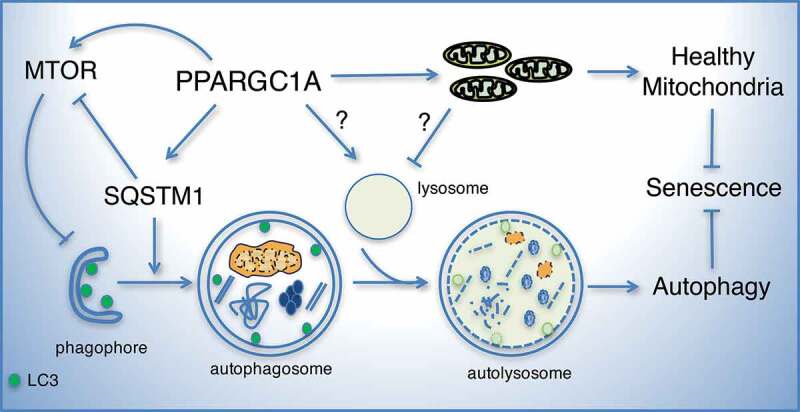Figure 9.

Model of the role of PPARGC1A and SQSTM1 in autophagy and senescence. Our data suggest that PPARGC1A regulates SQSTM1 expression leading to the upregulation of LC3-II and the stimulation of autophagy. Downregulation of PPARGC1A or SQSTM1 reduces LC3-II levels, autophagic flux, and cell proliferation and increases ROS levels and senescence. Elevated PPARGC1A expression or SQSTM1 deficiency increases MTOR phosphorylation creating a regulatory loop that may restrain excessive autophagy. It is unknown whether lysosomal dysfunction seen in PPARGC1A deficient cells also contributes to impaired autophagy. Altogether, the known functions of PPARGC1A, as a regulator of mitochondrial function and antioxidant capacity, together with its novel role, as a regulator of autophagy, contribute to reduced oxidative stress and senescence of VSMCs.
